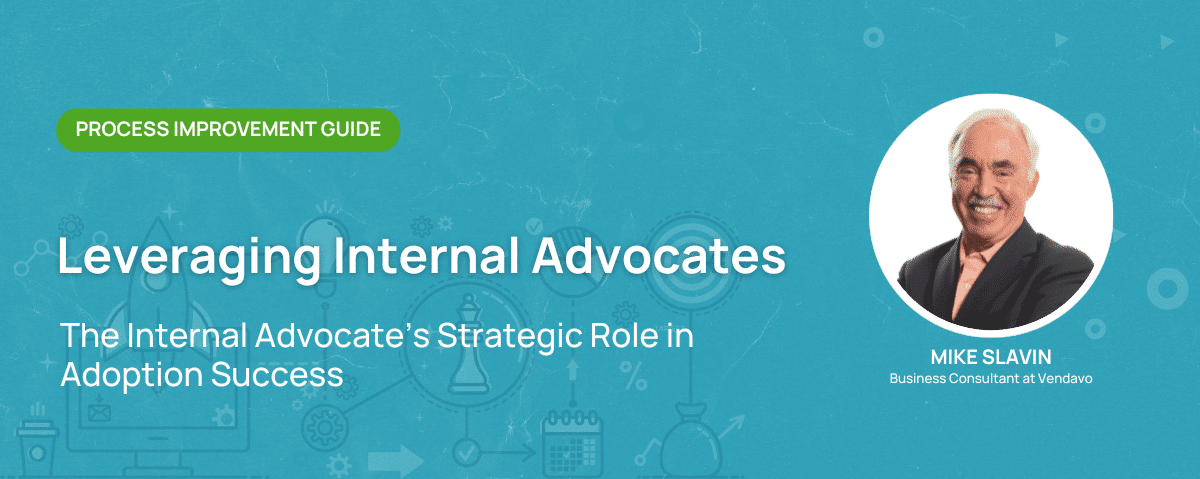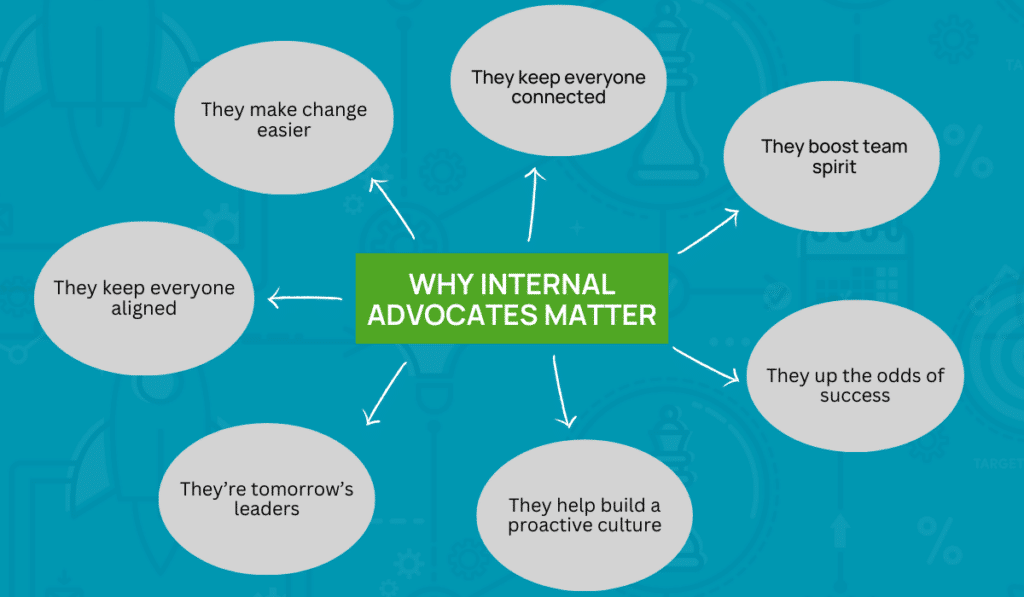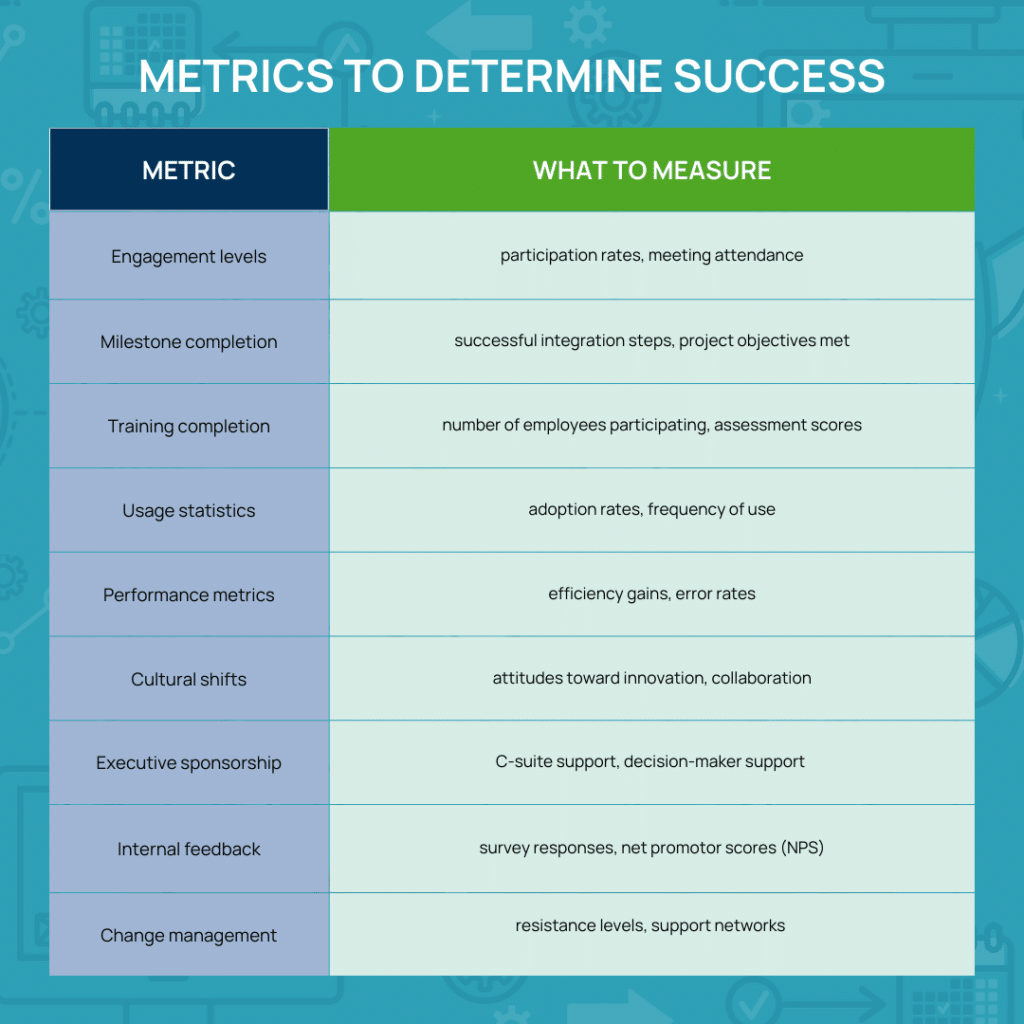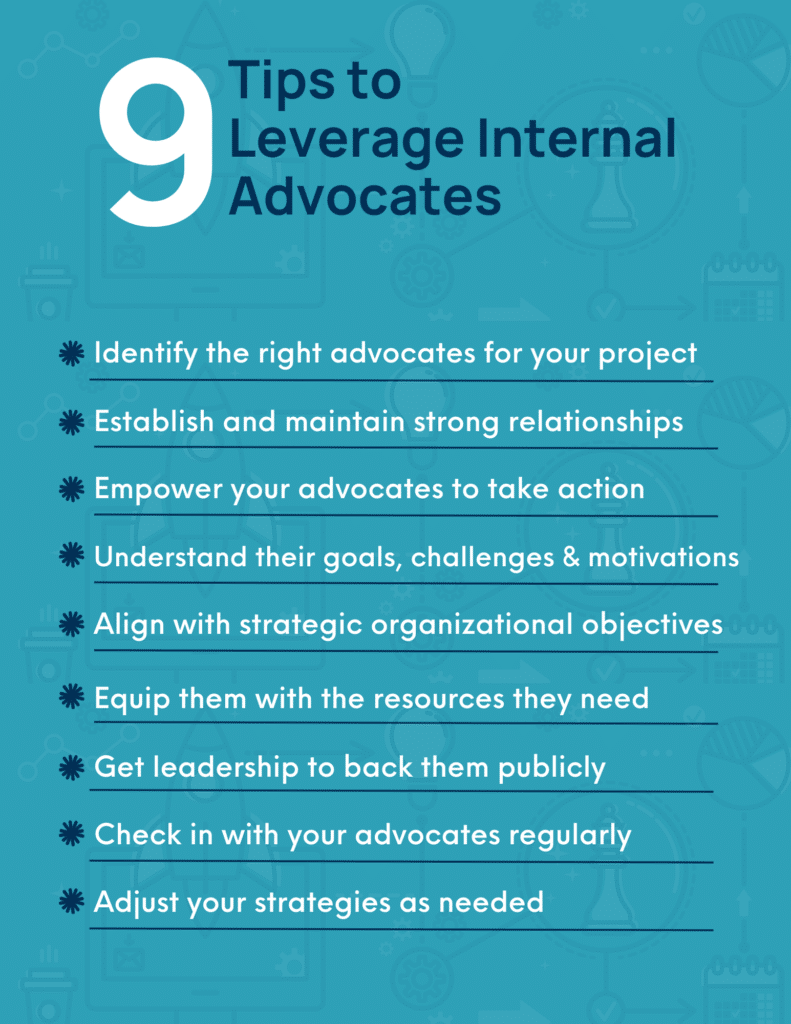
A lot goes into driving successful change, especially if your organization has been doing things a certain way for a long time. Mike Slavin, Business Consultant at Vendavo, explains what you need to know to get the right internal advocates on your side, ensuring your change management plans get the attention and adoption they deserve.
Successful change within an organization hinges on many factors, but one of the most pivotal is the role of internal advocates. These individuals are supporters as well as strategic enablers whose influence can determine the success or failure of major projects.
Their ability to navigate, influence, and mobilize resources within the corporate ecosystem can transform a static proposal into a dynamic project.
Here’s what you need to know to make sure you’re properly leveraging the right internal advocates within your organization.
Why Internal Advocates Matter
Internal advocates are incredibly valuable in any organization. Here’s why they matter:

- They make change easier
Think of internal advocates as your in-house influencers for change. They help get everyone else on board with new ideas and smooth the bumps that inevitably come with change. Their ability to connect and communicate across teams makes transitioning into new processes less of a headache for everyone.
- They keep everyone connected
Advocates are like the hubs in your communication wheel. They ensure that important messages and feedback flow effortlessly up and down the organizational ladder, keeping everyone informed and involved.
- They boost team spirit
When advocates are enthusiastic about a project, their energy is contagious. They rally the troops and get their colleagues excited about new initiatives, which can lead to higher engagement and better results from the team.
- They up the odds of success
Having advocates on your side means your projects are more likely to hit their marks. These folks know the ins and outs of the company culture and have the savvy to navigate internal politics, which can often make or break a project’s success.
- They help build a proactive culture
Internal advocates champion change and innovation. Their proactive approach solves current problems and paves the way for a culture that strives to be better.
- They’re tomorrow’s leaders
Advocacy is good for your projects and a steppingstone for advocates themselves. Taking on these roles lets them shine and develop leadership skills that prepare them for bigger things ahead.
- They keep everyone aligned
Internal advocates help ensure that different parts of the organization aren’t just doing their own thing. They align everyone’s efforts towards common goals, making the organization more unified and efficient.
Leveraging internal advocates makes your projects more successful and nurtures a work environment that’s more connected, engaged, and ready for whatever comes next. These champions are pivotal in turning your strategic visions into reality.
Characteristics of Success for Internal Advocates
Potential advocates, or “mobilizers,” are characterized by their positions and capacity for action. These individuals:
- Are proactive
- Possess a unique blend of insight and influence
- Understand the intricate dynamics of the organization
- Are capable of advocating for transformative ideas
- Are typically open-minded
- Avoid the trap of “this is how we’ve always done it”
- See beyond conventional practices
Internal advocates prioritize the broader organizational goals, focusing on the collective success rather than individual recognition. This makes them invaluable in steering projects that require cross-departmental collaboration and executive buy-in.
How to Maximize Impact
Empowering advocates involves providing them with the necessary tools, authority, and visibility to be successful. Effective empowerment includes regular communication, leadership endorsement, and visible support from top management. This helps advocates feel valued and supported, increasing their effectiveness and motivation.
Metrics like these can help determine success:

- Engagement levels – participation rates, meeting attendance
- Milestone completion – successful integration steps, project objectives met
- Training completion – number of employees participating, assessment scores
- Usage statistics – adoption rates, frequency of use
- Performance metrics – efficiency gains, error rates
- Cultural shifts – attitudes toward innovation, collaboration
- Executive sponsorship – C-suite support, decision-maker support
- Internal feedback – survey responses, net promotor scores (NPS)
- Change management – resistance levels, support networks
Leadership support is fundamental here. Leaders endorsing advocates, delegating authority to them, and allocating resources enhances credibility. This top-down endorsement empowers advocates and signals their role to the entire organization.
Best Practices in Leveraging Internal Advocates
Leveraging internal advocates effectively is key to driving change and ensuring the success of initiatives within an organization. Here’s how to maximize their impact:
- Identify and empower the right people
Select individuals who demonstrate influence, enthusiasm, and a proven track record of getting things done within the organization. Empower them with the authority and resources necessary to act as change agents.
- Provide clear goals and expectations
Clearly communicate the goals and expectations associated with their advocacy role. This includes specific outcomes you expect their influence to achieve and how these align with broader organizational objectives.
- Offer training and support
Provide training sessions for advocates to enhance their skills in areas like leadership, communication, and change management. Continuous support is also crucial to help them overcome any challenges they face in their roles.
- Create a feedback loop
Establish a mechanism to give and receive feedback. This helps in fine-tuning strategies, makes advocates feel valued and listened to, and boosts motivation.
- Recognize and reward efforts
Publicly recognize and reward the efforts of your internal advocates. This not only motivates them but also sets a precedent for the value the organization places on advocacy and change leadership.
- Foster a culture of collaboration
Encourage a collaborative environment where advocates feel supported by their peers and leadership. This involves promoting open communication and providing platforms for advocates to share their insights and strategies.
- Measure and share success
Regularly measure the impact of your advocates using the KPIs outlined earlier and share these successes across the organization. This validates their role and demonstrates the tangible benefits of their efforts. - Sustain engagement
Keep advocates engaged by involving them in ongoing projects and decision-making processes. Their continued involvement ensures that advocacy remains a dynamic and integral part of organizational culture.
By implementing these best practices, organizations can enhance the effectiveness of their internal advocates, driving meaningful change and achieving strategic goals more efficiently.
Checklist: How to Leverage Internal Advocates

- Identify the right advocates for your project.
- Establish and maintain strong relationships with and among advocates.
- Empower your advocates to take action.
- Understand their goals, challenges, and motivations.
- Align them with the strategic objectives of the organization.
- Equip them with the resources they need for success.
- Get leadership to back them publicly to boost their credibility.
- Check in with your advocates regularly to see how things are going.
- Adjust your strategies as needed to improve their effectiveness.
Internal advocates are pivotal figures in the transformation of an organization. By carefully selecting, engaging, and empowering these key players, organizations can significantly enhance their ability to implement change effectively.
Ready to take your organization’s growth and profitability to the next level? Reach out today to speak with a Vendavo expert about how our full suite of commercial excellence and revenue optimization solutions can help.